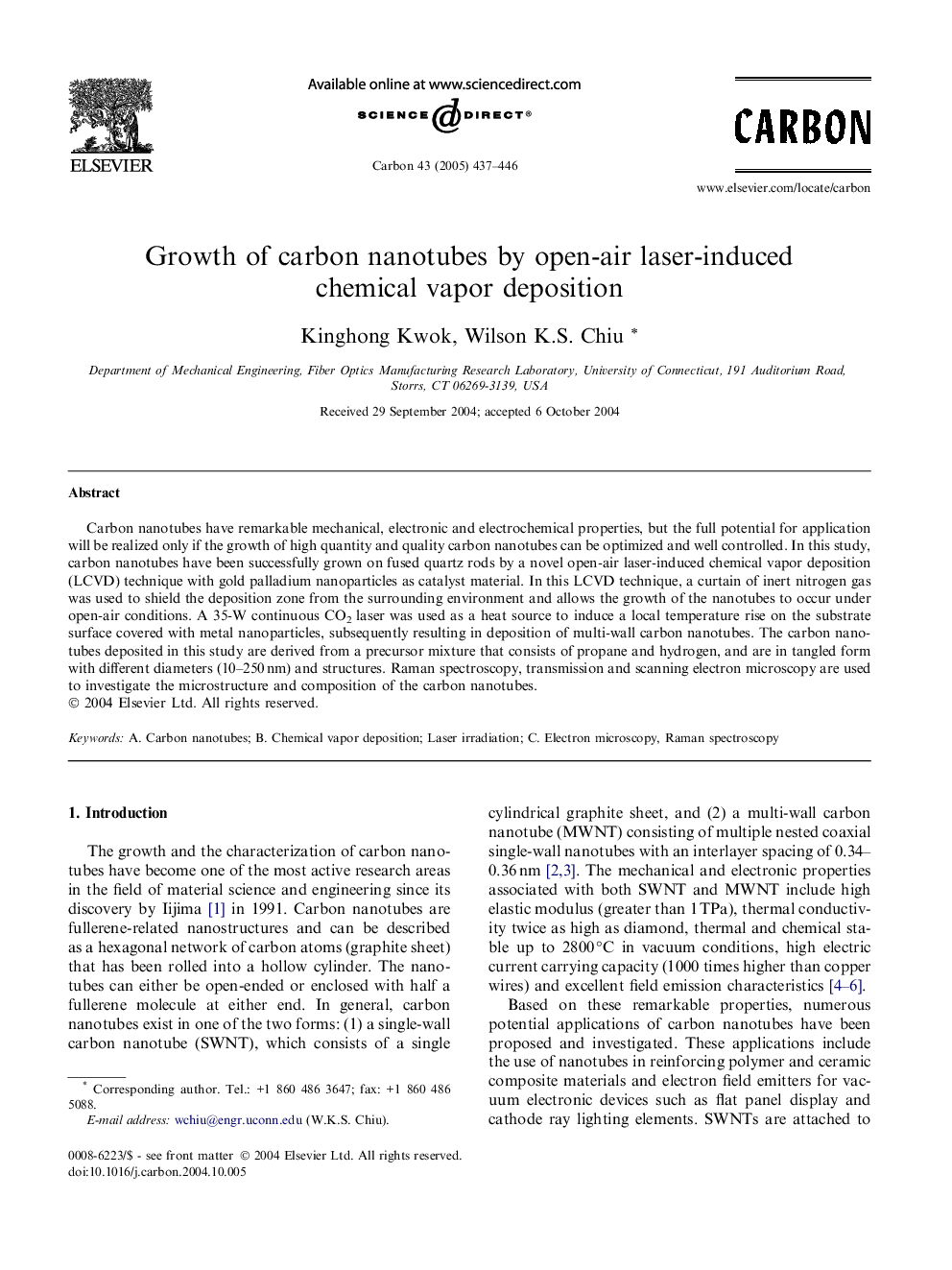| Article ID | Journal | Published Year | Pages | File Type |
|---|---|---|---|---|
| 10611386 | Carbon | 2005 | 10 Pages |
Abstract
Carbon nanotubes have remarkable mechanical, electronic and electrochemical properties, but the full potential for application will be realized only if the growth of high quantity and quality carbon nanotubes can be optimized and well controlled. In this study, carbon nanotubes have been successfully grown on fused quartz rods by a novel open-air laser-induced chemical vapor deposition (LCVD) technique with gold palladium nanoparticles as catalyst material. In this LCVD technique, a curtain of inert nitrogen gas was used to shield the deposition zone from the surrounding environment and allows the growth of the nanotubes to occur under open-air conditions. A 35-W continuous CO2 laser was used as a heat source to induce a local temperature rise on the substrate surface covered with metal nanoparticles, subsequently resulting in deposition of multi-wall carbon nanotubes. The carbon nanotubes deposited in this study are derived from a precursor mixture that consists of propane and hydrogen, and are in tangled form with different diameters (10-250Â nm) and structures. Raman spectroscopy, transmission and scanning electron microscopy are used to investigate the microstructure and composition of the carbon nanotubes.
Keywords
Related Topics
Physical Sciences and Engineering
Energy
Energy (General)
Authors
Kinghong Kwok, Wilson K.S. Chiu,
